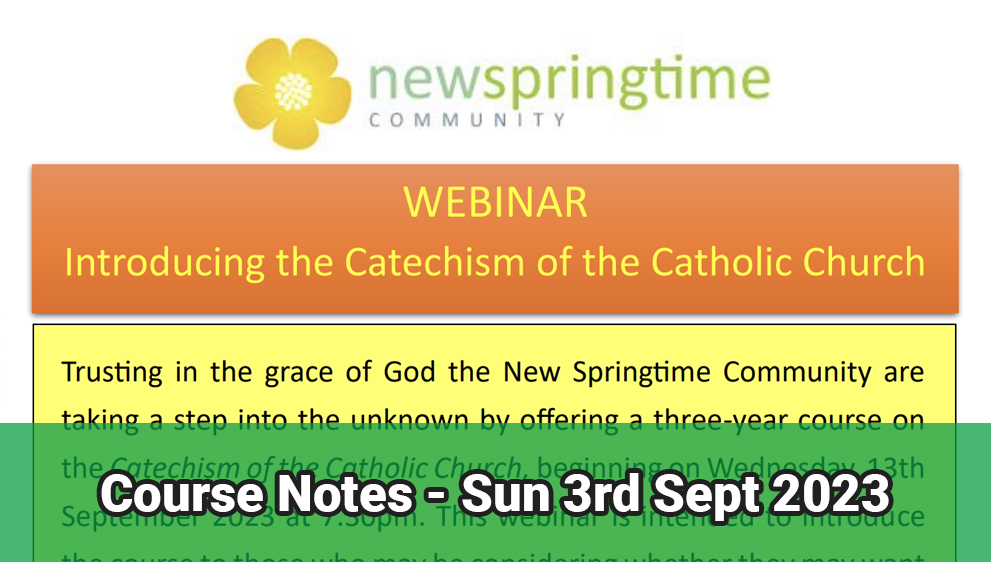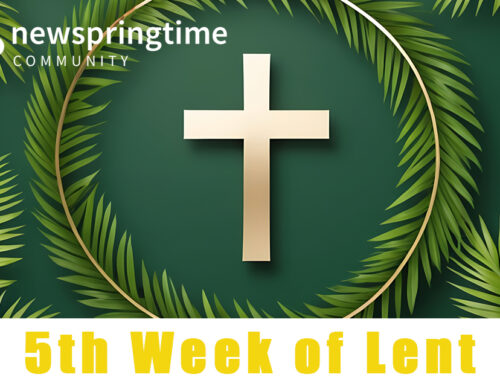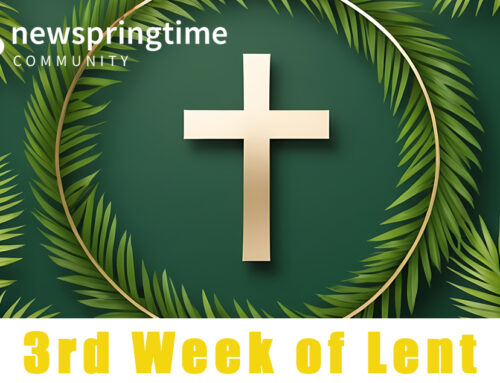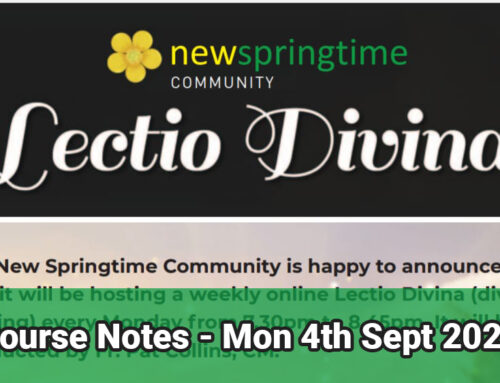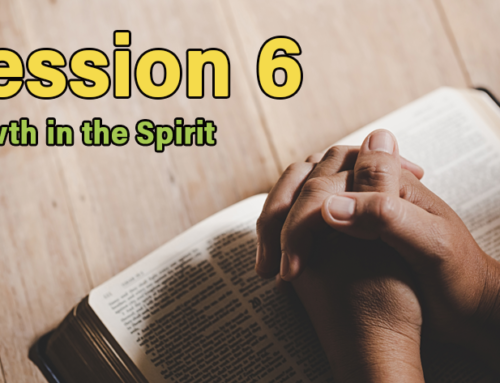Finding Truth in a Relativistic World
Session One: A Post-truth World
To download Catechism – Session One course notes for 3rd Sept 2023, please click here
- The Current Secular Crisis of Truth
In this first talk I want to propose the idea that we are living at a time when there is a crisis of truth. In postmodern society, all truth, is at best, partial and provisional. For example, when I used to teach university students, I’d sometimes say in class, “of course it is true to say that such and such is the case.” Then almost inevitably some student would put up his or her hand and say, “Father surely you aren’t claiming to know ultimate truth. All anyone can say is that such and such is true for them. We all have our own truths.” It would appear, therefore, that modern culture is adrift on a sea of subjectivism and relativism where the umbilical cord between the human mind and objective truth has been severed.
Popes John Paul II and Benedict XVI have acknowledged this. Pope John Paul II said in par. 91 of Faith & Reason, “The currents of thought which claim to be postmodern merit appropriate attention. According to some, the time of certainties is irrevocably past, and the human being must now learn to live in a horizon of total absence of meaning, where everything is provisional and ephemeral.” Speaking about relativism in 2005 Pope Benedict XVI said that “It is assumed that the authentic truth about God is in the last analysis unreachable . . . This renunciation of truth seems realistic and useful for peace among religions in the world. It is nevertheless lethal to faith.“ In the light of these statements, it is not surprising to find that in 2016, the word of the year was “post-truth” an adjective defined as, ‘relating to or denoting circumstances in which objective facts are less influential in shaping public opinion than appeals to emotion and personal belief.’
Currently, there is a phenomenon, which is referred to as groupthink, a word that was first used by social psychologist Irving Janis in 1972. It refers to a psychological phenomenon which inclines people to strive, for a number of motives, for consensus within a group. In many cases, the members will set aside their own personal beliefs while adopting the opinion of the rest of the group. There is empirical evidence that indicates that groupthink is reinforced by social media platforms, such as Facebook, X and Instagram whose algorithms suggest that viewers look at content that both reflects and reinforces their particular way of looking at things while ignoring any contrary view. I suspect that many of those who adopt views that seem to be out of touch with objective facts are subject to groupthink for one reason or another.
- Crisis of Syncretism in the Catholic Church
A danger that can occur in a relativist, post-truth, secularised society when too much emphasis is placed on the primacy of subjective religious experience is that it can lead to syncretism, i.e., the mixing of elements from different religions, cultures, or schools of thought. Many Catholics and Protestants are syncretists because knowingly or unknowingly they mix Christian beliefs and practices with many that are not Christian.
A number of years ago I was asked to teach a course on contemporary spirituality in the Milltown Institute of Theology and Philosophy. As part of the course, I included a talk on New Age Spirituality. However, I did not mention that fact at the beginning of the class. Instead, I disguised New Age ideas and practices, by using many Christian terms. When I concluded my talk, I asked what the class participants thought of my presentation. Many of them responded by saying that it was the best description of spirituality they had ever heard, “You put into words what so many of us believe… You made spirituality seem so alive and relevant,” they said. Then I went on to inform them that in actual fact I had been describing New Age spirituality. I pointed out that it is not only pagan, but also anti-Christian. This indicated to me that at a time when experience is so important in modern culture, many Christians are going into the supermarket of meaning and taking from the shelves whatever ideas and practices that appeal to them from a subjective point of view. They are being taken from the occult, non-Christian religions, philosophy, spiritualism, astrology, depth psychology, modern quantum physics and the like. Then they synthesise the mixture with their Christian beliefs and practices without feeling any guilt although the outcome is incompatible with orthodox Christian belief.
- Discovering the truth
We read these ominous but reliable words in 1 Jn 5:19, “We know that we are from God, and the whole world lies in the power of the evil one.” As Jesus said about the devil, “He has always hated the truth because there is no truth in him. When he lies, it is consistent with his character; for he is a liar and the father of lies.” So, perhaps it is not surprising that the truth is hard to find in modern culture.
How can we escape from the thickets of modern culture where truth is so elusive? The Catechism of the Catholic Church responds in pars 2465-2466, “The Old Testament attests that God is the source of all truth. His Word is truth. His Law is truth . . . In Jesus Christ, the whole of God’s truth has been made manifest. Full of grace and truth, he came as the light of the world, he is the Truth.” Speaking to Pilate Jesus declared, “I have come into the world to testify to the truth” (Jn 18:37).
The word for truth in the Old Testament is emet, meaning a reality which is “firm” or “certain,” it contains the notion of solidity, validity, faithfulness, and steadfastness. In the Greek of the New Testament, the word for truth is aletheia. It has the basic meaning of disclosing or uncovering that which has been concealed. It was used to indicate a real state of affairs in contrast to a myth or legend in which it had been concealed or hidden. Philosophers would use the word to distinguish a real state of affairs from one which had only the appearance of reality. Christian theology maintains that there are two main ways of discovering the truth, namely, the exercise of natural reason and divine revelation. We will look at these points during one of the course nights.
A] Reason
St Paul declared in Rm 1:20, “Ever since God created the world, his invisible qualities, both his eternal power and his divine nature, have been clearly seen; they are perceived in the things that God has made.” Paul was talking here about a rational inference as a result of observing the greatness and beauty of created things. The First Vatican Council infallibly declared, “If anyone says that the one, true God, our creator and Lord, cannot be known with certainty from the things that have been made, by the natural light of human reason: let him be anathema.”
B] Revelation
Almighty God can reveal what would otherwise be incomprehensible in a way that goes beyond the limited ability of the natural mind. Rather than seeing the truth in abstract, propositional terms, the New Testament sees it, first and foremost, in personal ones. Jesus Christ, God made man, is the very incarnation and revelation of all truth. As he said of himself, “I am . . . the truth” (Jn 14:6). Jesus stated on another occasion in Jn 16:13, “When the Spirit of truth comes, he will guide you into all the truth, (especially the truth about himself) for he will not speak on his own authority, but whatever he hears he will speak.”
Not only were the words of Jesus the words of God who is Truth itself, but all of the scriptures are also inspired, and convey the truth God wanted us to know. As we read in the Dogmatic Constitution on Divine Revelation, “since everything asserted by the inspired authors or sacred writers must be held to be asserted by the Holy Spirit, it follows that the books of Scripture must be acknowledged as teaching solidly, faithfully and without error that truth which God wanted to be put into sacred writings for the sake of salvation. Therefore “all Scripture is divinely inspired and has its use for teaching the truth and refuting error” (2 Tim. 3:16-17). It is also worth noting in this context whether natural or supernatural that St Thomas Aquinas said in his Summa Theologiae, “whatever its source, truth is of the Holy Spirit.” In par 1 of his encyclical, Faith and Reason, St John Paul II, maintained that faith and reason are not only compatible but essential to one another. He said that “Faith and reason are like two wings on which the human spirit rises to the contemplation of truth.” Faith without reason, he argued, leads to superstition. Reason without faith leads to nihilism and relativism.
Conclusion
In our post-truth cultural context, it is not too surprising to find that many Catholics are infected by the spirit of the times and are out of touch with the truths taught by the Church. For example, in 2012, it was found before the Eucharistic Congress in Dublin that only about 26% of Irish Catholics believed in the real presence in the blessed sacrament. Despite the Church’s clear teaching to the contrary two thirds of Catholics approx voted in favour of abortion and same sex marriage.
It is significant, given this state of affairs, that in the CCC, par. 2467 we read, “Man tends by nature toward the truth. He is obliged to honor and bear witness to it: “It is in accordance with their dignity that all men, because they are persons . . . are both impelled by their nature and bound by a moral obligation to seek the truth, especially religious truth. They are also bound to adhere to the truth once they come to know it and direct their whole lives in accordance with the demands of truth.” So, it is not surprising that in par. 3 of Dignitatis Humanae we read, “Truth, however, is to be sought after in a manner proper to the dignity of the human person and his social nature. The inquiry is to be free, carried on with the aid of teaching or instruction, communication and dialogue, in the course of which men explain to one another the truth they have discovered, or think they have discovered, in order thus to assist one another in the quest for truth. Moreover, as the truth is discovered, it is by a personal assent that men are to adhere to it.”
Session Two: Sources of Ultimate Truth
Unbeknown to many, the new catechism is far from the only one. St. Peter Canisius, who was instrumental in fighting Protestantism in Germany wrote the first catechism in 1555 known as the Catechism of St. Peter Canisius. Shortly afterward in 1566, the Roman Catechism was commissioned by the Council of Trent, overseen by St. Charles Borromeo, and issued by His Holiness Pope St. Pius V. It remains the most best-known Catholic catechism in print. It was sometimes referred to as the Catechism of St. Pius V, or the Catechism of the Council of Trent. Of course, there were also nationally produced catechisms, e.g., The Maynooth Catechism which was a modified version of a Catechism drawn up in 1775 by Dr James Butler, Archbishop of Cashel. It was designated by the National Synod of Maynooth for General Use throughout the Irish Church in 1882 and revised in 1892. In the 20th century in Irish schools, it was known as the Green Catechism from the colour of its cover.
Origins of the CCC
A proposal was made at the 1986 Synod of bishops, 20 years after the conclusion of Vat II, that a “reference for catechisms and compendiums be prepared in different regions. The presentation of doctrine must be biblical and liturgical, offering sound doctrine while being at the same time adapted to the life of Christians today.”
In 1986 Pope John Paul II appointed a Commission of Cardinals and Bishops to develop a compendium of Catholic doctrine. In 1989 the Commission sent the proposed text to all the Bishops of the world for consultation. In 1990 the Commission examined and evaluated over 24,000 amendments suggested by the world’s bishops. The final draft was considerably different from the one that was circulated in 1989. In 1991 the Commission prepared the definitive text for the Holy Father’s official approval.
The Pope gave his approval on June 25, 1992, and in an apostolic constitution entitled Fidei depositum was published on October 11th in which St John Paul declared the Catechism to be “a valid and legitimate instrument for ecclesial communion and a sure norm for the teaching of the truth, especially religious truth.” Reflecting, sometime later on the process by which the Catechism was produced, Cardinal Ratzinger, one of its key authors, wrote: “It is still a sort of wonder to me that a readable, for the most part intrinsically unified, and, in my opinion, beautiful book arose out of such a complex editorial process. The constant growth of unanimity among such different minds as were represented in the editorial committee and in the commission was for me, and for all those who took part in the project, a magnificent experience in which we often believed that we felt a higher hand guiding us.”
Papal Comments on the CCC
1] “May the Catechism serve the renewal to which the Holy Spirit ceaselessly calls the Church of God, the Body of Christ, on her pilgrimage to the undiminished light of the Kingdom” (John Paul II, 11th October 1992)
2] “Read the Catechism of the Catholic Church and rediscover the beauty of being Christian, of being church, of living as part of the great ‘we’ that Jesus formed around him to evangelise the world” (Benedict XVI, 15th July 2012)
3] “The Catechism of the Catholic Church presents the faithful with the perennial teaching of the Church so that they can grow in their understanding of the faith. But it especially seeks to draw our contemporaries – with their new and varied problems – to the Church, as she seeks to present the faith as the meaningful answer to human existence at this moment of history” (Francis, 11th October 2017)
The Purpose of the Catechism
Writing in an excellent article, entitled, “The Challenge of the Catechism,” Cardinal Avery Dulles, S.J., said in an article in First Things, in 1995, “The Catechism sets forth the whole body of Catholic teaching in an organic manner. It is a serene, comprehensive presentation of the authoritative teaching of Scripture and Catholic tradition, systematically distributed in four parts dealing respectively with
- the creed,
- the sacraments,
- Christian conduct,
- and prayer.
These parts are broken down into familiar divisions: the twelve articles of the creed, the seven sacraments, the ten commandments, and the seven petitions of the Our Father.
The Catechism as a whole is a magnificent panorama, breathtaking in its scope. Where else could one find between two covers a digest of the full teaching of the Church, down through the ages, about almost any conceivable point from the dogma of the Trinity to the morality of gambling? As a catechism, the book concentrates on doctrine, set forth in a clear and orderly manner. Yet the presentation is free from the subtle and technical distinctions characteristic of scholasticism. Closely packed with information, it is unencumbered by professional jargon and therefore accessible to a wide public.
While pre-eminently concerned with truth, the book is no mere head trip. It speaks to the heart, eliciting prayer and devotion. Although the creed skips from the birth of Jesus to his passion and death, the Catechism inserts at this point a section on the mysteries of the life of Jesus, in which the inner mystery of his incarnate existence radiates with captivating power. Devotion to Mary, which permeates the entire Catechism, is treated most explicitly in the article on the communion of saints. Many other doctrinal sections, such as the presentation of the symbols of the Holy Spirit, invite the reader to meditation. The authors have drawn liberally on liturgical texts and have incorporated moving passages from the ancient fathers and medieval and modern saints and mystics. In these selections, care has been taken to draw from Eastern as well as Western sources, and the voices of women as well as men are heard.”
One point I have come to appreciate is that while the CCC is a summary of Catholic doctrine of the faith, it avoids being theological in the sense that it does not give voice to any of the various different ways in which Catholic doctrines are interpreted by Catholic theologians, e.g., St Augustine’s psychological model of the Trinity. Brilliant as it is, it is not included because it is not scriptural and because there are and have been other ways of understanding the Blessed Trinity.
The Universal Catechism and Local Catechisms
The CCC was intended principally for use by bishops, priests, deacons and catechists. It was always the Church’s intention that it would be used as a point of reference for the production of Catechisms adapted to the needs of different countries. For example, Ireland produced a Catechism which was not approved of by Rome. Then the Irish bishops asked the American bishops for permission to publish a modified version of their Catechism. It was entitled, Irish Catholic Catechism for Adults, and published in 2014, by Veritas. In the preface it says, “it presents life and faith together, sets the teachings of Jesus in an encounter with daily life, invites us to judge what we ought to do about our faith, and give us the encouragement and information we need to return to daily life in a more Christian way.”
In 2002 some of the world’s bishops requested that the CCC would be shortened for use by lay Catholics in particular. In 2005 Pope Benedict published “The Compendium.” Speaking about it he said, “The Compendium which I now present to the Universal Church, is a faithful and sure synthesis of the Catechism of the Catholic Church. It contains, in a concise and much shorter form, all the essential and fundamental elements of the Church’s faith, thus constituting, as my Predecessor had wished, a kind of guide which allows believers and non-believers alike to behold the entire panorama of the Catholic faith. In its structure, contents and language. The Compendium faithfully reflects the Catechism of the Catholic Church and will thus assist in making the Catechism more widely known and more deeply understood.” I will often make use of the Compendium during the Catechism course. There is another book entitled, The Companion to the Catechism of the Catholic Church which is a compendium of the texts referred to in the CCC.
It is worth mentioning that an unofficial Catechism entitled YOUCAT, which was designed for use by young adults, was published in 2011. It has been very successful.

